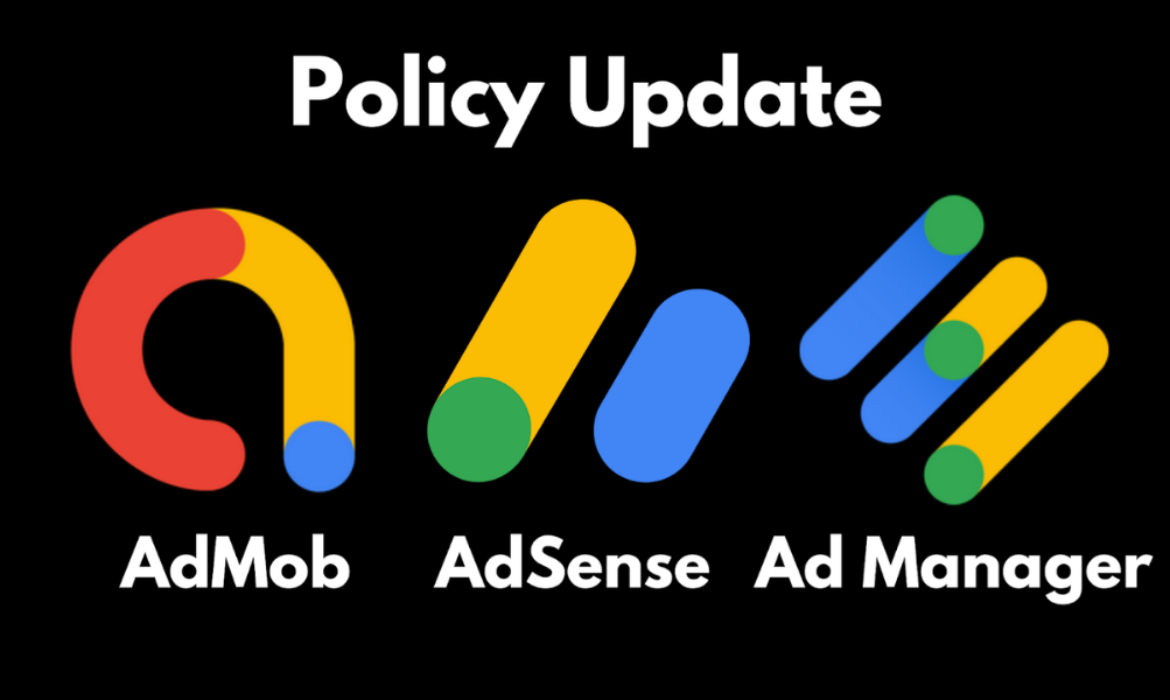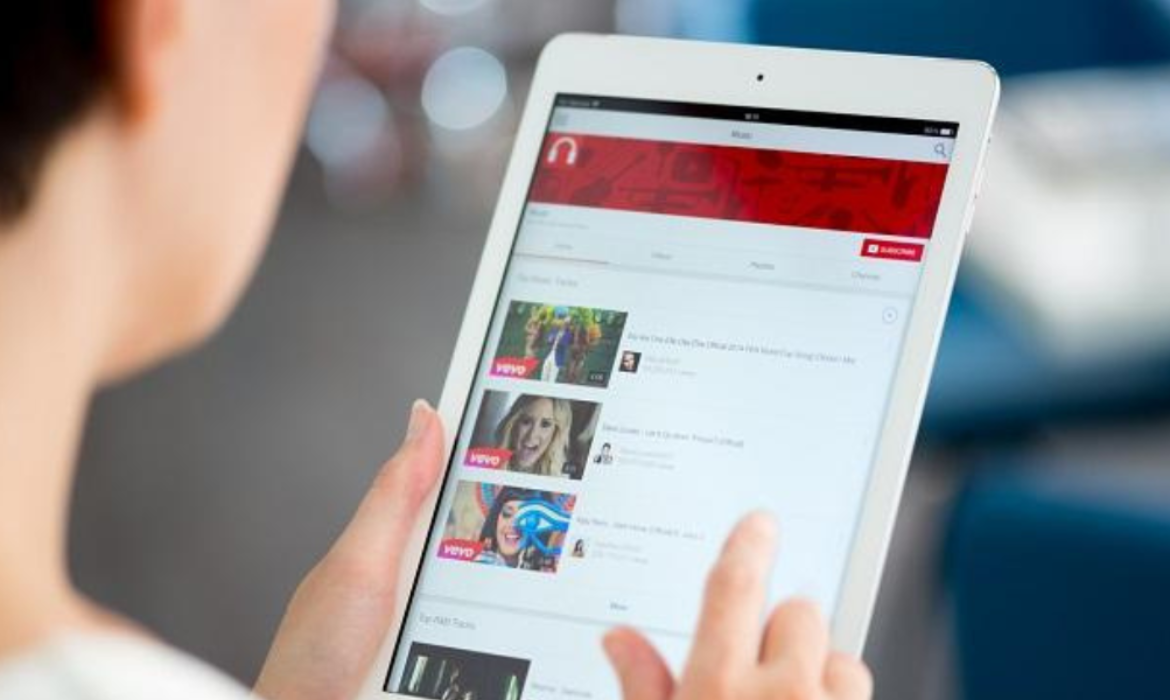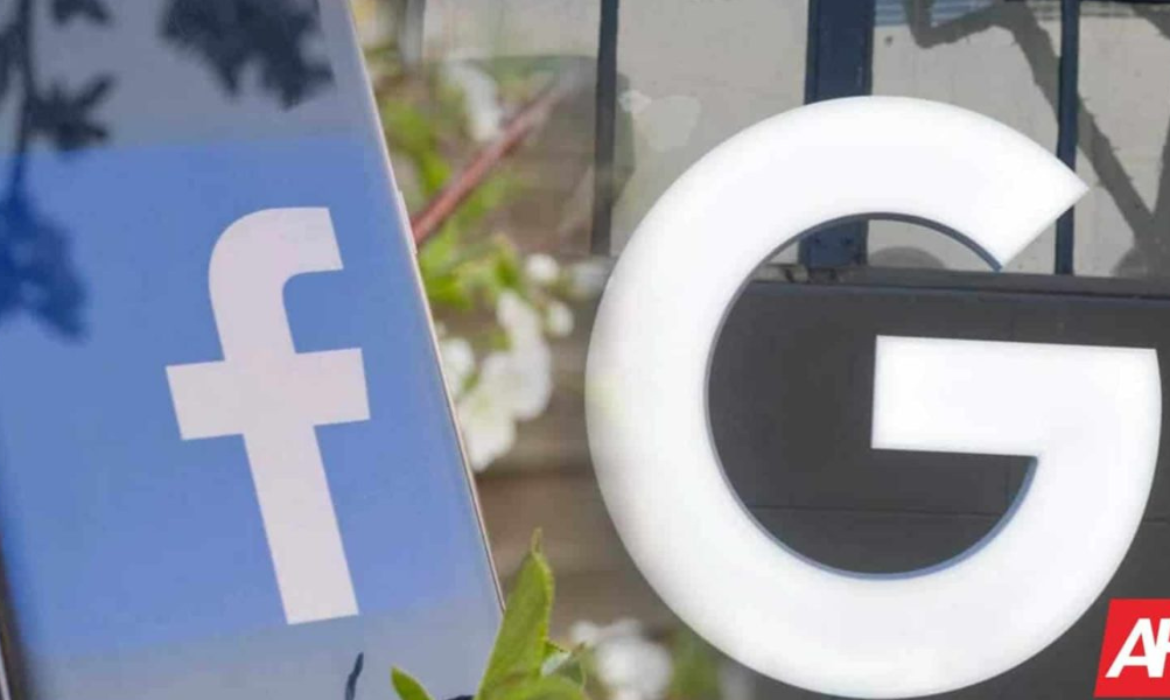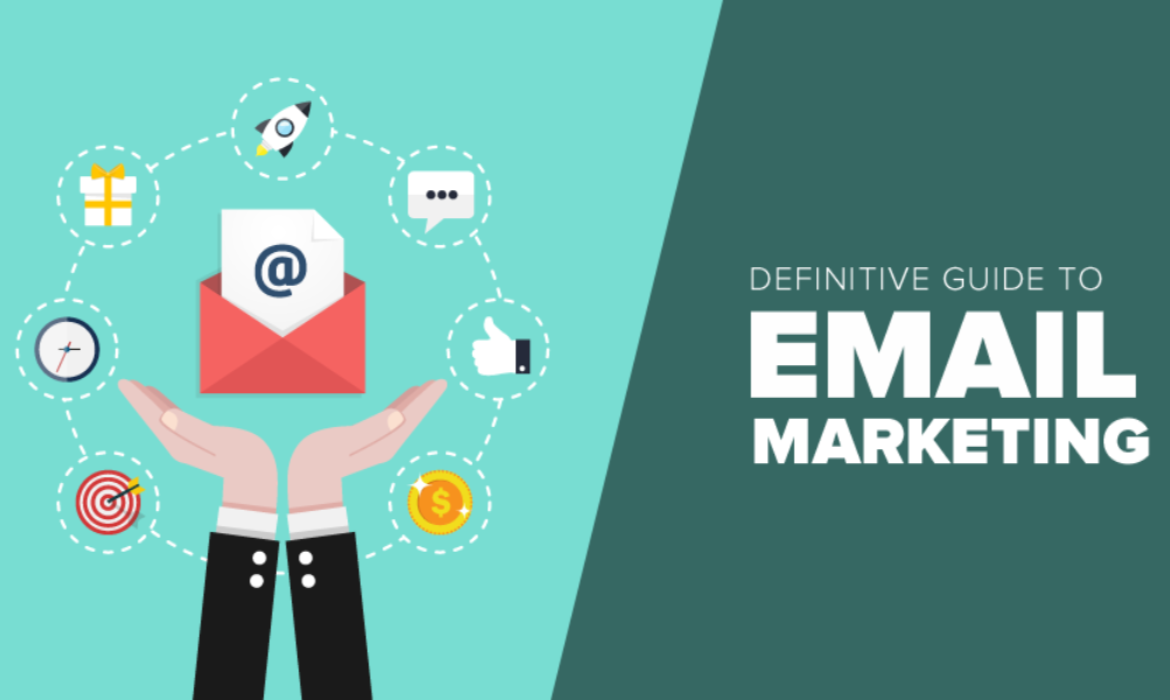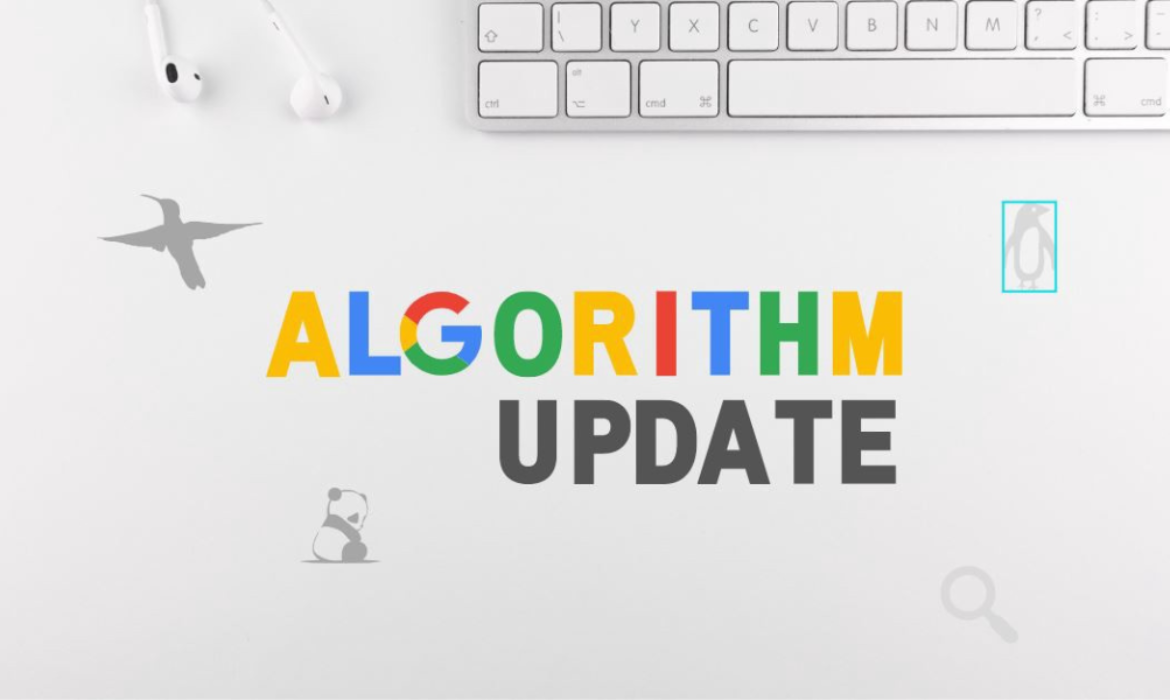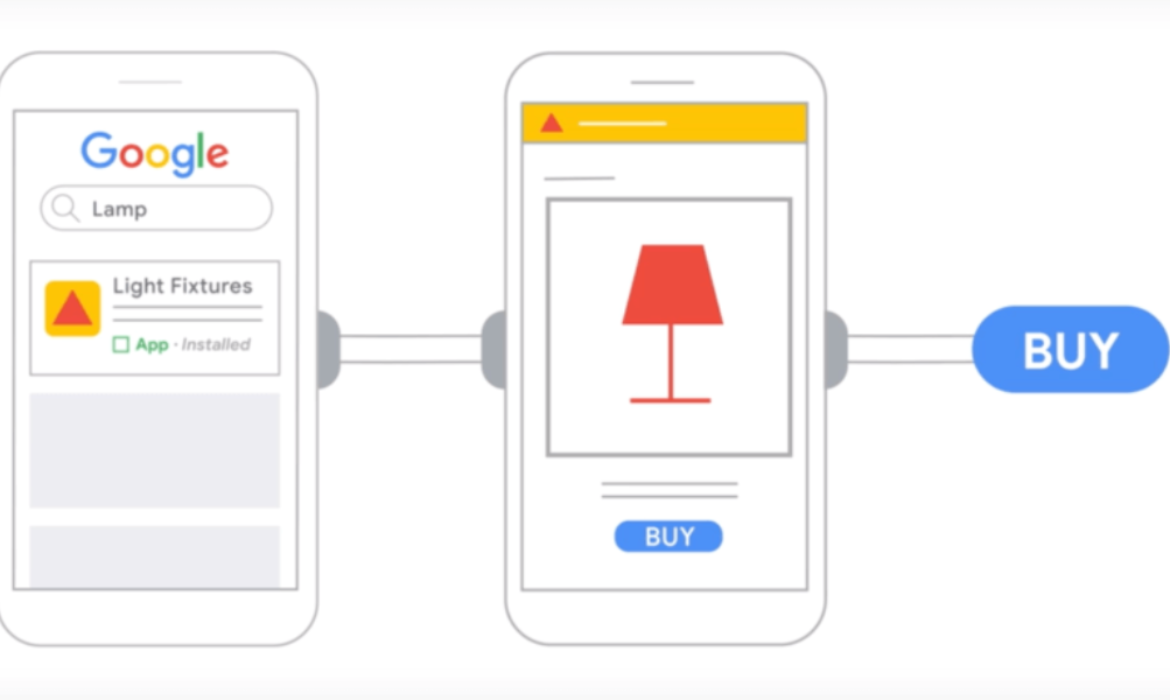Google Ends All Gossips: Revealed Fee Structure For Advertisement Tools
Since a long time now! People were keen to know the prices of advertisement with Google, especially after it declared its DSP, DV360. The speculations were high, as there are always some hidden charges, including taxes.

Image credit – marketingland
However, Google ended this ongoing gossip! By releasing a series of blogs and articles, it painted a clear picture by releasing its fee structure for its different portals.

Image credit – PeggyKSTipsandTricks
These portals included Display and video 360, Google ads, Ad Manager and its publisher tech. It is the first incidence where Google came out openly with its prices.
According to an aggregate data of 2019, if the advertiser spent $1 on the media with Google tech, the Publisher received a 69% share from that dollar. Whereas, the rest 31% is the profit gained by Google.
Reportedly, DV360( DSP) takes only 13% of $1 spent by an advertiser on media. On the other hand, Ad Manager charges an approximate of 18% of the dollar spent by the advertiser.

Image credit – Ezoic
However, with Google Ads, the campaigns include the display, it charges 14% of every dollar spent by an advertiser. The ad networks charge their advertisers on the bases of cost-per-outcome. However, they pay the publishers on a CPM basis. Therefore, the cost varies on average.
Google disclosed the direct and programmatic amount, which they charge from publishers.
In an analysis of top 100 news publishers, who are using Google, discovered that they directly or indirectly(through partners) sold three-quarter of their inventory to the company. In that setup, Google charges an approx 1% fee based on the ad requests volume.
For the advertisements, in the remaining quarter filled programmatically, Googles charge, for handling the impression was 16%. it also clarified, for any impression filled directly by publishers, Google only charges 5% of the total revenue.

Image credit – Cardinal Path
Although, there are a couple of warnings: While publishers use different DSPs to sell advertisement through multiple ad exchanges, they might be paying variable amounts for these advertisements. Through open biding, Google charges 5-10 per cent fee. However, advertisements sold by Ad Manager is charged with a 20% fee.
Also, it’s not yet clear how Ad-sense works in all this share proportion. According to previously shared data, Google takes with Ad Sense is around 68%. However, it wanted to clarify to the publishers that it doesn’t double charge them with its additional charges for Ad Manager.

Image credit – PPC Land
Why All of Sudden Google is so Transparent?
Well, Google wants to prove that it doesn’t fraud its users. Since a long time now, it has been suffering from allegations.
Also, there is suppose to be an antitrust case which is anticipated by the tech giant this year. During this time frame, several parts of its business will be under a minute check. The state attorney general and the Department of Justice is supposed to be meeting on Friday, to discuss the case. This information was provided by The Wall Street Journal. Hence, as Google is earning a large chunk of its revenue from Ads, it could be one of the things that the departments will investigate.
Last year, an antitrust paper released faulted tech giant on its in-efficiency of sharing end-to-end fees. In a statement, it stated, “No one (other than Google) has visibility into what happens between AdWords and AdX.”
Even the programmatic ecosystem was demanding a transparent approach from Google. Sellers and buyers started to realize that their contract with the company, doesn’t give a clear justification of fee, which Google charged them.

Image credit – Google Support
The transparency started flooding the market nearly three years ago. Some independent ad technology companies including Rubicon Project and AppNexus shared data on their take away share of the money. They did so to get rid of the pressure from the industry to reveal the hidden fees. After that, the Trade Desk decided to go public. Hence, they reveal their fees every year.
ISBA is frequently auditing the supply chains. All this, to uncover the hidden charges. Marketers and other tech buyers are demanding from Blockchain to provide them with log-level data. These are the clear indications that publishers and advertisers are looking for transparency. The tech giant is trying to address the issue by providing transparency to its advertisers.
YouTube Tests New Shoppable Video Ads Tools
Amid a pandemic that created havoc around the world that resulted in prolonged store closures. This has led brands to advertise their products online to drive sales as more people are online now. To make things easier for them, YouTube has introduced new direct response solutions that make video ads more shoppable, drive conversion, and automate content delivery across the platform.
The idea is to make video ads the new ‘storefront’ for the brands as an increasing number of brands are using video ads that connect them directly to customers. YouTube Ads director and product manager Nicky Rettke wrote in the blog post, “Last year, the number of active advertisers using TrueView for action grew over 260 percent.”
Increase in sales with Shoppable TrueView for action
In the new test, the eCommerce advertisers can show their products in their TrueView for action ads. When the user clicks on the expansion arrow, browsable product imagery appears below the video.

Image Credit: Search Engine Land
The advertisers are required to sync their Google Merchant Center feed to the video ads, expand their call-to-action button, and drive traffic to a specific product page. However, Facebook recently released “Shops” creates on platform storefronts but keep the users and transactions within Facebook.
Retailer Aerie used Shoppable TrueView for action to increase awareness and sales for its 2020 Spring campaign and saw a 25% higher return on ad spend than the previous year and nine times more conversions compared to their traditional media mix. Rettke said in the post that 70% of people bought a brand after seeing it on YouTube.
Video Campaigns drive conversions
The next tool announced is ‘Video campaigns’, a cost-effective way to drive conversions, boost web traffic, or generate leads across the platform. It automatically brings video ads to the YouTube home feed, watch pages, and Google video partners in one campaign as well as include any future inventory that becomes available like the What to Watch Next feed.

Image Credit: Google
YouTube tested the video ad campaign with a start-up Mos to help students raise funds for college to avoid debts. Rettke said in the blog post that it saw 30% more purchases at one-third of the cost of its previous ad spend.
Lead Generation to a Video campaign
The third tool is adding lead forms to a brand’s video ad campaign. Lead forms help advertisers reduce costs and obtain potential costumers. It appears below the video ad and asks the viewers to fill the form while the ad is running.

Image Credit: Google
Automobile giant Jeep tested this approach with its Korea branch and saw a 13-times increase in completed leads at an 84% lower cost per lead as well as generated more leads.
Finally, Google has included YouTube in the Google Ads attribution report that will help advertisers identify the maximum impact across YouTube, Search, and Shopping campaigns.
Shoppable Ads, a new focus for social media platforms
Shoppable ads also considered as direct-response ads have become a major focus of all social media platforms in the pandemic when ad sales went down. Facebook introduced shoppable ads on its platform and Instagram. Snapchat has in-app shopping whereas buy groceries without leaving Pinterest. Shoppable ads are also seen on Tik Tok.
DR ads have helped Facebook, Instagram, Snapchat to maintain profits, and CPM’s. As per Adexchanger reports, YouTube sales VP Adam Stewart said,
“YouTube storefront isn’t a traditional DR advertising product.YouTube has a bustling DR business, because it’s popular for app-install campaigns, especially with mobile gaming companies.”
Direct response advertising features will be the focus of YouTube’s NewFronts presentation to advertisers. As a part of YouTube’s pitch, Stewart said the storefront isn’t meant to rival Facebook-Instagram or Snapchat commerce offerings but its natural counterpart is television.
Facebook Denies To Pay Money To News Companies In Australia.
Facebook has declined to pay Australian news agencies after the Australian government forced them to do so. According to Facebook, they would rather prefer to remove the Australian news content rather than paying money to the news companies in Australia.
As per the statement stated by Facebook, “The amount of content of Australian news contributes a very nominal part in a user news feed”. Hence, they don’t feel liable to pay a hefty amount to Australian news companies.
In a statement, they stated, “If there were no news content available on Facebook in Australia, we are confident the impact on Facebook’s community metrics and revenues in Australia would not be significant,”
This came as a threat from Facebook. Hence, could be an indication to boycott Australian news companies.
Further, they stated: “Given the social value and benefit to news publishers, we would strongly prefer to continue enabling news publishers’ content to be available on our platform,”
During these critical times, news industries are facing tough times. Most of the news industry across the globe has lost its advertisement revenue in print media. This was the most effective source of income for news industries. Many of the print newspapers were surviving on this resource of earning.
Looking at the critical condition of news companies, the Australian government intervened. They asked Google and Facebook to pay for the news content from the Australian news companies, which they share on their platform.
However, Nine Entertainment and Rupert Murdoch’s News Corp, are two of the Australian biggest media companies who are pushing this issue.
According to them, the financial crisis that News industries are suffering is due to the tech giants like Facebook, Google and other similar firms. They state that most of the advertisement revenue is digested by these tech firms and News industries are suffering severely due to this by gaining nothing.
As stated, coronavirus caused bankruptcy, in the news organizations. Several print editions had to close their shops.
Even in Australia, every major media house fired employees to save cost. Nearly 170 newspaper and newsroom shuttered or got suspended.
The ACCC, Australian’s competition regulatory, calculated that Facebook and Google combined earned around 6 billion Australia dollar(4 billion US dollar) in a year from advertising in Australia.
In a fair deal, leading newspapers demand at-least 10% of that amount to be paid to them each year.
Last year, this demand was rejected by Google by stating that they earned 10 million Australian dollars a year only by the news linked advertisement.
The two media companies are strongly relying on the facts presented by the ACCC. Also, the ACCC is hoping to find a resolution to this situation.
The ACCC aims to find a common ground between tech firms and media houses. It aims to establish a “Code of conduct” to help the two in curbing disinformation, sharing revenue, protecting user privacy and sharing data.
The ACCC is instructed to resolve this by the end of July. As soon as ACCC find a resolution, the Australian government will implement the final code.
Facebook Is All Set To Link Wikipedia To Its Platform
Facebook recently announced to introduce a “Knowledge” feature to its platform. This feature will link Wikipedia to Facebook. This culminates in helping users to gain knowledge directly from the platform.
The feature is still under testing! However, people will be able to use it on iOS, Facebook web and mobile application.
Any Facebook user now will be able to find information about anyone on Wikipedia, directly from Facebook. The feature will portray information on its side panel.

Image credit – Twitter
The feature is a great step in identifying and removing false information shared by people on Facebook. As, for most people, Wikipedia is a trusted source for their information.
This will surely help in building people’s trust in the information shared on the platform.
An illustration of this feature is shared by Matt Navarra on his Twitter handle:
New? Facebook shows Wikipedia snippits in search results
h/t @jc_zijl pic.twitter.com/zcbQJmauhE
— Matt Navarra (@MattNavarra) June 9, 2020
Hence, this is surely a huge step for Facebook. Now, without leaving the platform, people will be able to access Wikipedia.

Image credit – What A Future!
The feature is somewhat similar to Google’s “Knowledge Panel”. Google launched this feature in 2012.

Image credit – Yoast
For example, You are looking for information on 5G. To help you with your search, Facebook will highlight a Wikipedia link. From there, you can get some deep insight into 5G. Instead of trusting the information shared on its posts, you can research things on your own. It will help in avoiding the spread of false information, on the platform.

Image credit – Dailymail
In the past decade, Facebook suffered excessively due to the propagation of false information on its platform. Due to its algorithm, controversial posts used to gain a lot of fame on the platform. A rumored post gains a lot of gossips!
These posts gained popularity in the search results. So, Facebook became a platform for the deception!
Although, in recent times, a lot has changed with Facebook. It has evolved on every front. It is all set to improve its reputation, and credibility of the information shared on the platform.
According to Facebook, the feature is limited in availability for now! It is mostly available in some parts of Europe.
We all must understand this!
During these tough times, it is really important to provide correct information. Since Facebook is a home for its billions of users, it is its moral responsibility to make sure that no false information is propagated over its platform.
Even small misinformation can create a ripple effect, in a negative direction, during these adverse times.
People trust the information shared on social media platforms like Facebook, Twitter and Instagram. Social media is developing perceptions of people.

Image credit- Pinterest
According to Dr Stephen Croucher, who is a lead author and a professor of communication at Massey University in New Zealand:
“In the case of COVID-19, social media, and other media, were and are being used as venues to share and build ideas, values and morals, many of these are very positive, but some are not.”
Exit Lockdown. Enter Reality – What Comes Next?
10 weeks. 70 days. 1680 hours. Far too many Netflix binges to mention. Meaningless stats at any other time, but in the context of the coronavirus, it’s a stark reminder of our time in lockdown. It’s strange to think that we’ve spent over two months in self-isolation, practising social distancing and learning how to re-interact with everyone around us.
Businesses have moved online, companies have shifted their models, employees have become tech evangelists quicker than anyone would have anticipated. In essence, we’ve been living a do or die mentality during this pandemic, so now that economies around the globe are beginning to open up, what comes next?
I could put my Nostradamus hat on again and make a load of predictions, but really, what’s the point in that? No-one knows what lies ahead, the situation is changing too quickly, with multiple factors at play and an unpredictable virus that doesn’t want to play by society’s rules. The only thing we can be certain of right now is uncertainty, as annoying as that is to admit. We can’t control the environment in which we operate, but we can look at what’s happening to use as a barometer for the trends currently shaping our industry.
The Golden Ecommerce Opportunity
“While the world falls apart, the stock market – and especially Ad Tech – keeps on pumping”. Considering the ripple effect that has been felt throughout every sector, at first glance, this may seem like a stretch, however, the sentiment on Wall Street surrounding digital media, and by extension, Ad Tech is undeniably positive.
Facebook reported flat revenue year over year in April, not usually a cause for celebration, but amid nationwide lockdowns, investors are confident in the platform’s ability to rebound. Similarly, Google and Snapchat beat analysts’ expectations, however, a tougher Q2 is expected. It’s a realistic snapshot of the peaks and troughs that have become commonplace during the pandemic, and as consumer behavior patterns continue to change, the major walled gardens will find new and more innovative ways to gain market share.
You only need to look at how the duopoly has applied itself during the crisis. Gold stars all around. Announcements from Facebook have come thick and fast over the past few weeks, with everything from their Giphy acquisition to the launch of Messenger Rooms and its sister app, CatchUp for video calls, creating a buzz. And amid the fluff – their Bitmoji-inspired Avatar app is a prime example – came what we were all waiting for: a real and very viable move into online commerce.
Facebook ‘Shops’ will allow small businesses to build online stores on both Facebook and Instagram, and in the future, will extend this feature to its Instagram Direct, WhatsApp, and Messenger platforms. Products can also be tagged during live broadcasts, and if Zuckerberg’s estimations are accurate, with some 800 million people already engaging in live video sessions daily across Facebook and Instagram, the opportunity here is huge.
According to Deutsche Bank’s Lloyd Walmsley, Shops has the potential to drive as much as $30 billion in incremental revenue – the bulk coming through further advertising opportunities. This makes sense when you consider Facebook’s rationale in enabling eCommerce across all of its platforms in this way; the closer the consumers are to checkout, the more willing advertisers are to spend. That’s probably why Bezos is laughing all the way to the bank as Amazon’s ad business continues to skyrocket. Of course, Amazon isn’t immune to the fallout either. Investors were told in no uncertain terms to ‘take a seat’ during the Q1 earnings report, amid challenging trading conditions, a pullback from some advertisers, and pressure on price. Still, with a reported 44% growth in Q1 and continuing strong traffic to the site, Amazon will be a thorn in the duopoly’s side for a long time yet. Google, much like Facebook, is looking to guard against this Amazonian invasion. The platform recently added organic listings to its Shopping site, offering retailers exposure to millions of daily shopping searches, while users will have access to a wider range of purchase options. On the surface, it’s likely to gain Google’s market share and advertising dollars over time and has the added bonus of taking aim at Amazon’s convenience model by competing on variety.
Even ‘smaller’ companies are looking to get into the retail game. Criteo continued its move away from retargeting, launching a self-serve ad platform for its retail media network. It’s particularly shrewd given how valuable retail media is right now. As eCommerce continues to surge in lockdown, traditional media budgets are being funneled this way to capitalize on the opportunity in real-time. The ‘Always On’ Mentality at the outset of the coronavirus, programmatic was one of the first to be hit. Brands paused their online campaigns; the default ‘easy’ option, as opposed to reviewing their other marketing channels. However, programmatic has proved to be adaptable, resilient, and flexible in the wake of continued challenges and pressures. It is already rebounding, and I believe digital and eCommerce will take an even larger share of overall advertising in the long run.
Still, even prior to this, publishers were being cautious with their investments and not capitalizing on the programmatic opportunity quickly enough. Of course, change has now been forced at every level. Digitization is a requirement and businesses no longer have the luxury of waiting things out. The nature of operating in 2020 is that you have to be ‘always on’. Adapt. Review. Adapt. Review. There’s no room for complacency.
For my part, I’d say on balance, I’m a pretty optimistic person. Look for the opportunity, acknowledge the risk, but be ready to take action, and that hasn’t changed in the past three months. What we’ll all need to be careful of as things begin to move again is abandoning the ‘critical change’ mindset we have adopted as standard during the pandemic.
Jeff Bezos “Day 2 is stasis. Followed by irrelevance. Followed by excruciating, painful decline. Followed by death. And that is why it is always Day 1.”
It’s probably more morbid than I would have put it, but he has a point. No more stasis. Let’s make every day count.

Ayman Haider
CEO at MMP World Wide – Board Member at IAB MENA
Wassim Mneimneh is a CEO at MMP Worldwide and a board member at IAB MENA. A dedication of a lifetime to career in advertising with a passion for tech, and focus on driving the transformation, implementation, and conversation on the value of programmatic and its ability to rebuild trust and safety for the media industry.
How Email Marketing Will Help Your Business Grow in 2020
Does Email marketing still exist in times of social media, artificial intelligence, chatbots, videos? A thought to ponder.
If you feel email marketing has lost its charm, then you are far away from the truth.
The truth is, email marketing is growing and email campaigns are still the best strategy for brands and businesses.
Here it is, Why?

Image Credit: Oberlo
As per data by Statista(2020), In 2019, the email users were 3.9 billion users and are expected to grow to 4.3 billion users in 2023, which is half of the world’s population. This clearly shows email marketing is an opportunity that should not be missed.
The above infographic on Email Marketing Stats 2020 provides facts and figures about the email market which is still robust and one of the best marketing strategies.
What Is Email Marketing?
Email marketing is more effective than SEO, affiliate marketing, or social media because it has a direct line with the audiences. It helps you connect with your leads, nurture them, and convert them into customers.

Image Credit: BackLinko
However, with the growing fervor of TikTok Facebook, Snapchat, will this old school tactic still work?
Emails have a better reach than social media and converting a prospect into a buyer. This shows email leading social media. Email is 40 times more effective than Facebook and Twitter combined. (McKinsey)
A third of customers who have subscribed to the retailer’s newspaper is a direct result of email marketing messages. (E-marketer)
These numbers are nice to know but you are still wondering, how are email marketing campaigns important in 2020?
Well, that’s what the next chapter is all about.
How Is Email Marketing Important In 2020?
With the booming popularity of social media and search, the importance of free emails in email marketing is higher than ever.
Let us comprehend the value of email marketing in 2020.
1. Everyone uses Emails:
Young people use email for several things – social media and personal expenses, mailing lists, and brand promotion or business. So, everyone has a valid email address.
2. Emails are easy to design and create:
An attractive and eye-catching email campaign for a small business budget with a reputed email marketing service provider can create wonders and similar to big brands.
After finishing designing the newsletter or free emails, businesses can quickly start to use email campaigns for promotion.

Image Credit: uCookies
3. Email marketing links all other channels
Email campaigns are a direct line of communication with the audience and a suitable way to promote marketing strategies.
Social Media
Most email service providers have footers with social media icons at the bottom that includes links to LinkedIn, Facebook, or Instagram. Subscribers can access those links and share the campaigns by clicking on it. Also, brands can share the reviews, posts on the social feed so subscribers can connect with the brands online.
For instance, the example of Urban Outfitters is a visually appealing email that highlights their most-liked Instagram posts. Also, note the share buttons at the bottom of the email.

Image Credit: Really Good Emails
Content Marketing
77% of people prefer to get permission-based promotional messages via email campaigns. To start with, first, a sizable email list is to be prepared. There are several ways to do this like giving something away for free or offering a newsletter update, videos, research report, infographic, or valuable content.
Make good use of content with interesting pictures and custom RSS feeds. For instance, the US outdoors always include interesting content in their email campaigns.

Image Credit: Emma
Webinars:
Brands can promote webinars on emails to their subscribers who are genuinely interested to hear and respond.
Performance Analysis
Email service provides information on how to improve future email campaigns and learn about subscribers. However, this will be a paid service.
Analytics aids in keeping a track of active and engaged subscribers and identifying trends as well as new markets. This data can help in retargeting campaigns and use marketing resources in the right way.
Capitalizing On The Data Collection:
Email marketing is one of the most scrutinized marketing methods in the post GDPR world. 78% of people say they are likely to trust companies with their personal data if they use it to personalize their experience through different channels like emails.
Emails give access to understand subscribers’ behavior and learn about their habits and interests to create customized email campaigns. Personalized email campaigns can be created by conducting surveys to collect quality data from active subscribers.
4. Encourage more subscriber participation:
Marketers gain the trust of the subscribers when they encourage more participation from them and let them control their inbox. Put a preference center link at the bottom of the email campaigns and prompt new subscribers to fill it.
A preference center allows the subscribers to tell the brands on how often they want to be emailed and what type of content they prefer. Below is an example of a preference center by Brooks Running.

Image Credit: Emma
5. Stay updated with automation and technology
Email service providers always give access to the latest automated features to give an enriching experience to the audience in the following areas:
-Segmentation
-Post-sales communication
-Re-engagement
-A/B Testings
Best Email Marketing Campaigns
With in-depth details on the importance of Email marketing, in the next chapter, we will see the best email marketing campaign examples.
1. BuzzFeed
Email Marketing Campaign: “Buzzfeed Today” Newsletter
Newsletters are Buzzfeed’s top sources of traffic. Buzzfeed has amazing, punchy, and short subject lines. They have awesome preview text that compels the reader to open the email.
If their subject line is a command, the preview text is the logical elaboration of the subject line.

Image Credit: Mail Floss
Their newsletters are from politics and daily news to DIY and cooking. They cover different audiences as they know exactly what to recommend to whom because of their email segmentation.
2. Amarso
Email marketing- another way to approach the cart abandonment.
If your product is enticing then put it at the center of your email marketing campaign directed at the customers who shopped but didn’t purchase. In this two-step email marketing campaign, Amarso is doing the same thing.
The 1st image is sent to the shoppers after an hour of shopping for those products whereas the 2nd image is a reminder of Amarso’s amazing products seen a few days back.

Image Credit: MailFloss
3. Airbnb
Short, Crisp and Communicative Feedback Survey in their Email Campaign
Their email campaign is short, crisp, fresh, and minimalist with a clear objective. Their emails are straight to the point and with a clear CTA. The email campaign looks good and engaging. In every email, you will get guides to different cities.

Image Credit: Mail Bakery
Email Marketing Platforms or Email Service Providers (ESPs)
There are many email marketing platforms but obviously, there is no single ‘best email service provider’. The best option depends on the objectives, goals, features, and list size of the marketers.
In this chapter, I am reviewing five of the top Email Service Providers. The features, pricing, pros, and cons of each email marketing platform are highlighted to help the marketer choose the best option for you.
1. Mail Chimp

Image Credit: Formget
Features
-It is the most popular and leading email marketing platform.
-It has an excellent dashboard with prebuilt templates, reports, lists, and more.
-There is email automation, better integration, optimization, and analytics.
Pricing
-A forever free plan allows 12,000 mails every month to 2000 subscribers.
-There are 3 packages based on features and the number of subscribers.
-Essentials for $9.99, standard for%14.99, and Premium for $299 are email marketing plans.
Know more about pricing
Pros
-It is best for small and medium-sized businesses at an affordable cost.
– It can handle large volumes of emails.
-The messages can be sent to email clients as well as for promotion on Facebook, Instagram, and other social media platforms.
-It has easy to use WYSIWYG editors and can access reports on the open rates clicks, spammed, unsubscription.
-It has friendly customer service and excellent email analytics.
-It helps you to customize the tools for your business with over 300 integrations.
Cons
-The regular updates and reconfiguration disrupt the entire working system as users have to understand and adapt to the new changes.
-Apart from the chat function, phone support is not provided.
-The individual addition of email contacts is cumbersome and has limited segmentation features.
-Emails sent via Mailchimp often goes to the promotion tab of Gmail or spam at times.
2. Mailjet

Image Credit: Formget
Features
-It has the best real-time dashboard and is preloaded with free responsive email templates and newsletters
-There are advanced reporting features like to track deliveries and know user actions.
Pricing
It has a free email marketing trial for 30 days for 6000 emails a month and 200 emails a day. There are 3 Packages like Basic, Premium, and Enterprise plans for each month.
Free email marketing trial for 30 days for 6000 emails a month and 200 emails a day.
Know more about pricing here!
Pros
– The dashboard is incredibly innate and the drag and drop editor option allows users to create different email templates.
– It provides a report that shows usual data including bounces, clicks, and so on.
-It is Reasonable and economical pricing compared to the competitors.
-It’s an all in one platform to send, track, and deliver marketing and transactional emails without any additional cost.
Cons:
-There are limited designs for email templates and cannot store images.
-Unsubscribing inactive users from the list is tiresome using Mailjet’s removal interface.
-The segmentation options are limited. Eg. One can run a campaign but cannot set conditions like whether a recipient has/unopened/bought the product.
3. Active Campaign

Features
– It has an intuitive email template builder and advanced marketing automation
-It has features like segmentation, machine learning, CRM and sales
-It has the best campaign tracking, free image hosting, email funnels, and autoresponders.
Pricing:
There are no free plans available but an email marketing test run can be done for 14 days. Active’s pricing packages are affected by two factors: contacts and features. It has 4 packages available – Lite for $9, Plus for $49, Professional for $129, and Enterprise for $229.
Know more about pricing
Pros:
-The dashboard shows the full history of your contacts and gives access to real-time reports that features display tracking of essentials like geolocation, clicks, opened rates, unsubscription details.
-It has great integrations with other tools like Facebook Ads, Gmail suite, websites, and more.
-The Lead scoring helps to prioritize accounts for the sales team and has dynamic content.
-It offers a free migration service. Unlike other tools, Active Campaign doesn’t charge you to move data from one email marketing tool to another.
Cons:
– The pricing isn’t the lowest but it is worth the value.
– The layout is not user friendly and many good features cannot be accessed seamlessly by the users.
– It becomes difficult to handle large volumes of emails.
4. Klaviyo

Features
–It helps e-commerce marketers to build, measure, and optimize email campaigns.
-It has a hassle-free dashboard that showcases all the recent campaigns based on revenue, days, and more.
-The segmentation of the platform is excellent based on the behavior and transactional data.
-Start your campaigns with pre-built email templates that can be customized.
– Use an autoresponder to send automatic emails to the audience.
Pricing
It offers a free trial of up to 250 contacts and can send 500 emails. The plans are devised based on the number of contacts. Pricing increases with the number of contacts- the maximum pricing option is up to $1700 per month for up to 146,00 contacts and a minimum of $25 for 500 contacts.
Know more about pricing
Pros
-It is easy to set up and user friendly.
-Enhance the eCommerce business on integration with Shopify.
-Create Personalized product recommendations for post-sale engagement.
-Visually transform email workflows and sign up forms to collect leads.
-Access to marketing automation to follow up with customers after they abandon a purchase.
-Integrate with the Facebook custom audience and create a comprehensive marketing campaign.
Cons
– The pricing is aggressive and high for smaller businesses.
– For beginners, the interface can be challenging initially.
– Limited customer chat support and no phone support.
-It can be difficult to use while integrating with Magneto and checking analytical information.
5. Gmail

Features:
-Everyone’s favorite Email marketing tool.
-A free, advertising-supported email service offered by Google.
-It’s a part of Google G Suite with 15 GB storage, color-coded inbox, and filters.
-Appropriate for all types of businesses.
-GMass extension can be used to send personalized and mass emails to every email address in the Gmail account.
Pricing:
It is a free service.
Pros:
-It is free, stable and fast
-It provides 99.9% spam and virus protection.
-It has Integration with the whole Google suite.
-Secured web platform and can be customized to an extent keeping it clean and simple.
-Integrated with Hangout that helps to directly reach the customers via call or chat.
-Excellent handling of large attachments and volumes of emails.
-A business email address can be used by logging into a Gmail account.
Cons:
-It might not work easily with a few desktop software or enterprise applications.
– There is no backup of emails in the inbox.
-It is connected to Google Drive storage, therefore, if it is full then it creates problems in receiving emails.
-Many client emails get sent to spams.
-It collects mail from the hosting server and will not collect email quickly.
Why do many use Gmail for email marketing?
- It has spam filters that reduce the risk of domain spoofing, phishing, and other malevolent practices.
- It has great features and saves time in searching for mails and referencing old mails.
- Gmail users are highly engaged which is the key point in email marketing.
How to use Gmail to send a newsletter?
GMass turns your regular Gmail account into a powerful email marketing platform. Without GMass, Google’s platform allows you to send email marketing campaigns to limited people in your G-suite.
Using GMass helps you send emails through the world’s highest delivering servers and gives the highest open rates. It also includes features like
GMass provides access to following email marketing features to your Google or Gmail account:
-Open tracking,
-Click tracking,
-Mail merge
-Message Personalization,
– Mass emails or bulk email service
-Scheduling.
-Create a mailing list
Best Practices To Follow For Email Marketing

Wrapping Up
The importance of email marketing has grown over the years. With all the insights provided in the article, here are a few takeaway points:
-Email is easy to integrate digital marketing campaigns.
-Email marketing gives a scope to build personal relationships with users.
-Email marketing is constantly evolving implies that email marketing strategies should also change with time.
-Technological innovation continues to improve email marketing and the way subscribers are engaging with emails is also changing,
-This proves that email marketing is here to stay and email marketing automation is the new trend that is catching up. Time to up the game and think about the new techniques and strategies for your next campaign.
Learn more: Facebook Is All Set To Launch Its Toolkit For “Email Marketing”.
The Guardian Introduces “The Registration Wall” To Collect First Party Data
Google and Apple have already initiated the process of discarding the third-party cookies, in their browsers. Similarly, The Guardian is asking people to sign-in, to help build the first-party data strategy.
The Guardian, in December, has initiated a testing model for its “Registration Wall”, including the only selected audience. This was shared in a post, by Caspar Llewellyn Smith, who is also a chief product officer at The Guardian.
According to him the goal of the testing is to portray more relevant advertisement to the customer and readers, this will also provide financial stability to the publishers.
The post started, “Asking readers to sign in provides us with more information that we can use to personalize our approach in asking for support, to serve advertising (with readers’ consent) and to create a better user experience.”
When a reader clicks on an article, an option to register for free appears on the screen. The user can opt for a “Not now” option if the user is not interested.

Image Credit -Digiday
In the case of the user register, they get the perk of posting comments, exclusive access to the editorial section, and they can also opt for gift cards and discounts.
This helps the publishers to understand user preferences. The user and publishers can keep a track of the number of articles read by the user in a month.
Alice Pickthall, a senior analyst at Enders says, that it is a good job. “Registration is part of the funnel to growing reader engagement and donations while improving advertising quality and targeting so the benefit will be twofold to both strands of revenue.”
Registration walls collect the first-party data, this helps them to empower the content choice of the audience. It also, increase the accuracy of ad-targeting.

Image credit -Wikipedia
Even newspapers like the New York Times, Tribune Publishing, Hearst Newspapers are considering to implement registration walls on their websites.

Image credit – UnderConsideration
With the help of registration walls, the publishers can have a better understanding of the users’ psych and therefore, they can target the ads according to the user preferences.
The Registration Wall leads publishers to a ten times higher conversion rate, as reported by the subscription platform Piano.
According to Thomas Beakdal, a media analyst, the first-party data helps to retain the customer, “You can’t do good churn analysis without first-party data.”
Even, the first-party data helps to increase the number of subscribers.

Image credit – Twipe
According to Nordic publisher Schibsted, an increase of subscribers was noticed when they analyzed their first-party data and understood the reason behind the cancellation journey of their users.
As the concept of third-party cookies is dying, the publishers’ community must build a first-party database. It will help publishers like Vox, Business Insiders and The Washington Posts in sustaining their businesses.
A registration wall will help publishers to collect details like email, phone number, name etc. helping them efficiently targeting their audience.
In just one year of installing registration wall on their website, The New York Times swears to never use third-party cookies for advertising.

Image credit – CNN en Espanol
The Guardian intends to provide a wonderful journalism experience to their audiences. They don’t want to compromise on it at any end. They feel that it’s a civic right of a human to get accurate information during these tough times of pandemic. The introduction of the registration wall is another step in that direction.

Image Credit – The Guardian.
Online news platforms are experiencing heavy traffic on their website. Although, the revenue generated by advertisement is pretty low.
It’s astonishing that in March, The Guardian experienced a record-breaking user interaction on its unique browser. Since February, the number doubled and reached toa recorded of 336 million. As in February, this number was recorded to be 191 million.
Both, the number of daily visitors, and weekly visitors on the website have increased. In October 2019, The Guardian set a record of the maximum number of readers with some 750 million. This year in March 2020, it broke its record by reaching some 2.17 billion.

Image credit – Mediaweek
However, the data showed that The Guardian in the U.K experienced a downfall of the user database in April 2020. In March 2020, the number of readers was 35.7 million. In April it dropped down to 34.7 million. Still, it’s great when compared to February 2019, 25.6M unique readers.
Due to Covid-19, the publishers have seen a decrease in spent on advertisements. There is a downfall of 65% on the spent.
However, The Guardian is all set to achieve 2M paying supporters by the year 2022.
How Google’s Page Experience Will Change the Face of SEO in 2021
Google announced a new ranking algorithm -Page Experience- designed to evaluate web pages based on the user’s experience.
Will this impact my traffic and SEO? Yes.
But the good news is — it will be rolled out in 2021. Google said it will provide six months’ notice beforehand. So, there is ample time to prepare for it.
What is Page Experience?
Page Experience measures aspects of how a user perceives the experience of interacting with a web page. Simply, it means if Google thinks that the user experience is poor on your pages, it may not rank those pages as highly as of now.
Here is an example that Google doesn’t want users to experience.

Image Credit: Search Engine Land
In the above GIF shared by Google, the user was trying to click on “No, go back “ but because of an install bar pop up, it pushed the whole page down and led the user to click on “Yes, place my order” accidentally.
The purpose of this Google Page Experience update is to ensure that the sites that rank on top are not creating experiences that users hate. This shift is a step to a big change in SEO.
Google has a detailed developer document on the page experience criteria. The new Page Experience update uses the existing Google ranking factors -page speed, mobile-friendly, safe browsing, HTTPS, presence of intrusive ads, and now also layout shifts Google is refining metrics around speed and usability and these refinements are under Core Web Vital.
What are the core web vital?
They include real-world, user-centered metrics, that give scores on aspects of pages such as load time, interactivity, and the stability of content as it loads.
The core web vitals and existing Google ranking factors make the new Page Experience algorithm.

Image Credit: Google

Image Credit: Search Engine Land
These are the core web vitals factors:
- Largest Contentful Paint (LCP): Measures the Loading performance and should occur within 2.5 seconds of when the page starts loading.
- First Input Delay (FID): Measures the user’s interactivity with the page and pages should have an FID of less than 100 milliseconds.
- Cumulative Layout Shift (CLS): Measures visual stability of a page which means pages don’t have jumping buttons. The page should maintain a CLS of less than 0.1.
Additionally, a web page should not contain malicious or deceptive content, mobile-friendly, content easily available to users, and should be servers over HTTPS.
Preparation for this update
Google is adapting its algorithm to closely align with its aim of showing the sites first that the user likes. According to Google, changes will not happen before early next year, so no immediate action is needed.
This update will use Accelerated Mobile Pages (AMP), page experience metrics for scoring purposes if you have an AMP version of your page.
Good content will still be the most important factor despite a poor page experience.
“While all of the components of page experience are important, we will prioritize pages with the best information overall, even if some aspects of page experience are subpar.
A good page experience doesn’t override having great, relevant content. However, in cases where there are multiple pages that have similar content, page experience becomes much more important for visibility in Search.”
The future will say how big will this update be, till then start preparing for it as sites will get better with this update.
Roundtable with Industry experts
Here are the tweets from the roundtable that Google had with industry folks – Glenn Gabe and Aleyda Solis:
First, the update will be page-level like some other algos (https, mobile-friendly, etc.) But if there are many pages that have the same issues, they can all be impacted. Hard to say yet how much impact that would be. Could be lightweight, maybe stronger. But again, page-level. pic.twitter.com/4yiu49vKp7
— Glenn Gabe (@glenngabe) May 28, 2020
The Page Experience update will combine the new core web vitals with previous factors like mobile-friendly, https, mobile-popup algo, etc. I asked if those would be changing strength-wise. They didn't have anything to share about that. My guess is no, but anything is possible. pic.twitter.com/2EG4uXfhDa
— Glenn Gabe (@glenngabe) May 28, 2020
If a new core web vital is added in the future, it should not shock anyone. It won't be out of the blue. The metric will be written about, talked about, documented, etc. pic.twitter.com/GjA9okmmYb
— Glenn Gabe (@glenngabe) May 28, 2020
If a page has an AMP alternate that is shown to the user, then Google will take the AMP page into consideration to assess the page experience signal, since it’s the one that the users see.
…
— Aleyda Solis 🇺🇦 (@aleyda) May 28, 2020
…
* The signals taken into consideration for "page experience" will evolve and be updated yearly.
* And a confirmation: The new Page Experience as ranking signal won't be happening until next year, so there's enough time to improve things if there's the need 🙂
— Aleyda Solis 🇺🇦 (@aleyda) May 28, 2020
Learn More: Every 2020 Google SERP Feature Explained: A Visual Guide
How Donald Trump’s Executive Order Has Changed the Face of Social Media
Key Points:
- President Trump signed an executive order that aimed to scrap the legal protections conformed for social media.
- He is arguing that if social media companies seek protection from the fact that they cannot control what users post, then they shouldn’t intervene with those posts either.
The battle between Trump and Twitter finally came to a peak. President Trump signed an executive order to narrow legal protection to social media platforms that censors speech for ideological reasons.

Image Credit: Twitter
Strict action will be taken against Facebook, Twitter, Google, Youtube, and other platforms that interfere in direct communication with his followers. The orders give federal regulators the right to take action against online platforms if they are censoring free speech.
What it does
His executive orders call for greater scrutiny of social media platforms by limiting or revoking Section 230 of the Communications Decency Act, a piece of a 1996 law.
Section 230 is essential and made sense when it was first introduced when the internet was new. Section 230 gives protection to the digital world. In simple terms, if users post pictures or comments that are defamatory, the operator is not responsible for it but the user and actions will be taken against the user. Without Section 230, the internet that we know now wouldn’t exist. Twitter, Airbnb, Google, Facebook, Trip advisor all depend on this protection for their business. Every internet third party leverages Section 230 to mitigate risks.
Why it matters: The move comes just days after Twitter fact-checked and labeled two of President Trump’s tweet inaccurate.

Image Credit: Twitter
The tech giants move infuriated Trump and gave him a reason to execute his long time plan of reducing the liability of social media giants for content on their platform. Even though the idea of dismantling Section 230 is a threat to internet companies but many legal experts believe that it’s unlikely that the orders will have a practical impact on tech giants.
What changes with the order
Section 230 is an immunity to social media giants and protects them from being liable for the content billions of people post everyday.
- One of the repercussions of the order on the social media companies is stripping away the protections granted to them.
- It can be the death of an online review system that covers consumer products or services in travel, hotel, airlines, car, or others. For instance, Trip advisor boasts of 860 million reviews and could potentially be sued by U.S Federal courts for statements made by online critics if the protections are diluted.
- Social media platforms may either censor everything in the fear of getting sued that would undermine the freedom of speech as pointed out in the executive order.
- Or they might just not regulate or touch anything under the fear of getting sued, then the free speech problem will be out of control with no moderation.
- A troubling landscape for small and medium-sized media companies as they will not be able to afford staff and lawyer services leading to shut down.
- There will be no moderation over disruptive content like child exploitation over the fear of getting sued.
- Jeff Kosseff, who wrote a book about Section 230, says to Marketplace that we have no idea what the internet might look like without this regulation.
What are they saying
Facebook founder Mark Zuckerberg took a different tack and called out Twitter for its fact-checking and said they are not ‘arbiters of truth.’ the company will not get into any political fray.
Mr.Trump posted the same words on Facebook which has similar rules around voter suppression didn’t do anything to it. He said,
“We’ve been pretty clear on our policy that we think that it wouldn’t be right for us to do fact checks for politicians. I think in general, private companies probably shouldn’t be — or especially these platform companies — shouldn’t be in the position of doing that.”
However, the comments were met with derision from Twitter CEO Jack Dorsey, who replied to Zuckerberg tweet,
“This does not make us an ‘arbiter of truth. Our intention is to connect the dots of conflicting statements and show the information in dispute so people can judge for themselves. More transparency from us is critical so folks can clearly see the why behind our actions.”
Google’s Native Advertising Solution- Discovery Competes With Facebook

Discovery ads for the UGG brand cover Discovery feed, Gmail, and Youtube.
Image credit: Google
Key Insights:
- Google is positioning Discovery ads as a better way to reach online shoppers.
- 86% of online consumers are on a lookout for shopping ideas as they watch videos or content across the web.
- 90% of users discover new products and brands on YouTube Watch Next.
- Discover reaches hundreds of millions of consumers using the Google Search App.
- One campaign overs three giant Google products- Discovery Feed, Gmail, and Youtube.
Last May, Google announced at Google Marketing Live that ads are coming to discover. As a part of that, the Google Discovery ads were previewed for the Android and iOS feed, as well as Gmail and YouTube, and they are now finally rolled out to all advertisers globally last month.
With a single campaign, advertisers can reach 2.9 billion users across multiple Google surfaces- YouTube Home and Watch Next feeds, Discover feed on the Google Search app, and in Gmail Promotion and Social tabs. This approach to audience totals is similar to Facebook who started reporting usage across its ‘family of apps’ last year. Facebook reported 2.99 billion monthly active people (MAP) as of March 31. In simple words, Google is offering reach on par with Facebook.
All ads feature visual-rich product photography and are labelled.
- YouTube: Ads include an interactive carousel format and appear as users scroll through the Home and Up next feed while looking for new videos.
- Discover: Ads appear along with sports and personalized updates. The feed is available on Android, iOS app, and mobile web at google.com.
- Gmail: As per Google, ‘time offer’ appears as shoppers are checking the latest product deals in the Promotion tab of their inbox and are marked with a green badge that appears on the top of the feed like an email.
Unlike search ads, no need to type the query manually but Google is leveraging its understanding of what customers are interested in.
Thanks to Google’s unique understanding of customer intent, you’ll be able to show more relevant, meaningful ads to people when they’re most interested and ready to learn more about your products and services.
Why should Advertisers use Discovery
Google recommends for advertisers looking for:
- Drive conversions with their media
- Reach new customers with their media.
- Reconnect with their valuable customers.
Early Adopters of Discovery Ads
Early adopters like Deckers, iProspect, and M&M Direct have seen excellent results-driving customer action with Discovery ads alongside their existing media.
Lifestyle apparel brand Deckers worked with digital agency Jellyfish to promote the UGG brand’s 2019 holiday guide using Discovery ads. Deckers used repurposed high-quality images from its social campaigns and saw a revenue return of 10 times of its original ad spend. It plans to implement Discovery ads across the rest of its portfolio including HOKA and Teva.
Michelle Hernandez, senior manager of Omni-digital marketing at Deckers said,
“While Discovery ads don’t appear on social platforms per se, they offer rich, visually engaging experiences filled with meaningful content that excites and inspires consumers as they scroll through new content on YouTube, Discover and Gmail. This is where more and more consumers are engaged and spending time.”

Head of Acquisition, MandM Direct on Discovery Ads
Image Credit: Google
In early 2019, digital marketing agency iProspect tested Discovery ads with several large clients and reported a reduction up to 48% in cost per action compared to social ads.
iProspect senior director of paid search Christina Malcolm said, “We’re finding that Discovery ads are an interesting ad type that blurs the lines between traditional search, display, and social activations, but which can target different audiences and hit conversion performance goals.”
If you have failed to notice the Discovery ads in the feed yet, then that’s because Google is treading lightly. Currently, there is only one ad slot – in position three-on the Discover feed as Google is aiming high-quality bar and only showing the ads with best image assets that are relevant to users. However, the company also confirmed that more ads are likely to be rolled out.
How to get started with Discovery campaigns

Image Credit: Search Engine Land
Discovery ads are set up in Discovery campaigns with two ad formats: Discovery carousel ads with multiple images and Discovery ads with a single image.
Image Assets: Google scans your website for images that meet the size requirement, upload images, or select from the Shuttershock library. The key is to have high-quality images.
Headlines and Description: Discovery ads serve a combination of headlines and descriptions automatically. One can enter up to 5 headlines and 5 descriptions.
Geographical Targeting: Google shows a weekly impression estimate based on geographical targeting.
Call To Action Option: Google can automatically choose the call-to-action text in your ads or there are 10 other options such as ‘Apply Now’, ‘Shop Now’, and more available to choose from.
Finally, Discovery ad campaigns can be targeted by location, audience, or demographics. This is Google’s automated universal campaign and smart bidding is required. In its Discovery ads tips page, Google notes that advertisers should “Choose an average daily budget at least 10 times the value of your target cost-per-action (CPA) bid and wait for at least 40 conversions before making changes to your campaign.”
Read more: Every 2020 Google SERP Feature Explained: A Visual Guide

